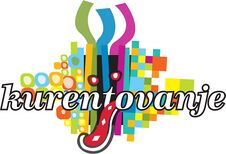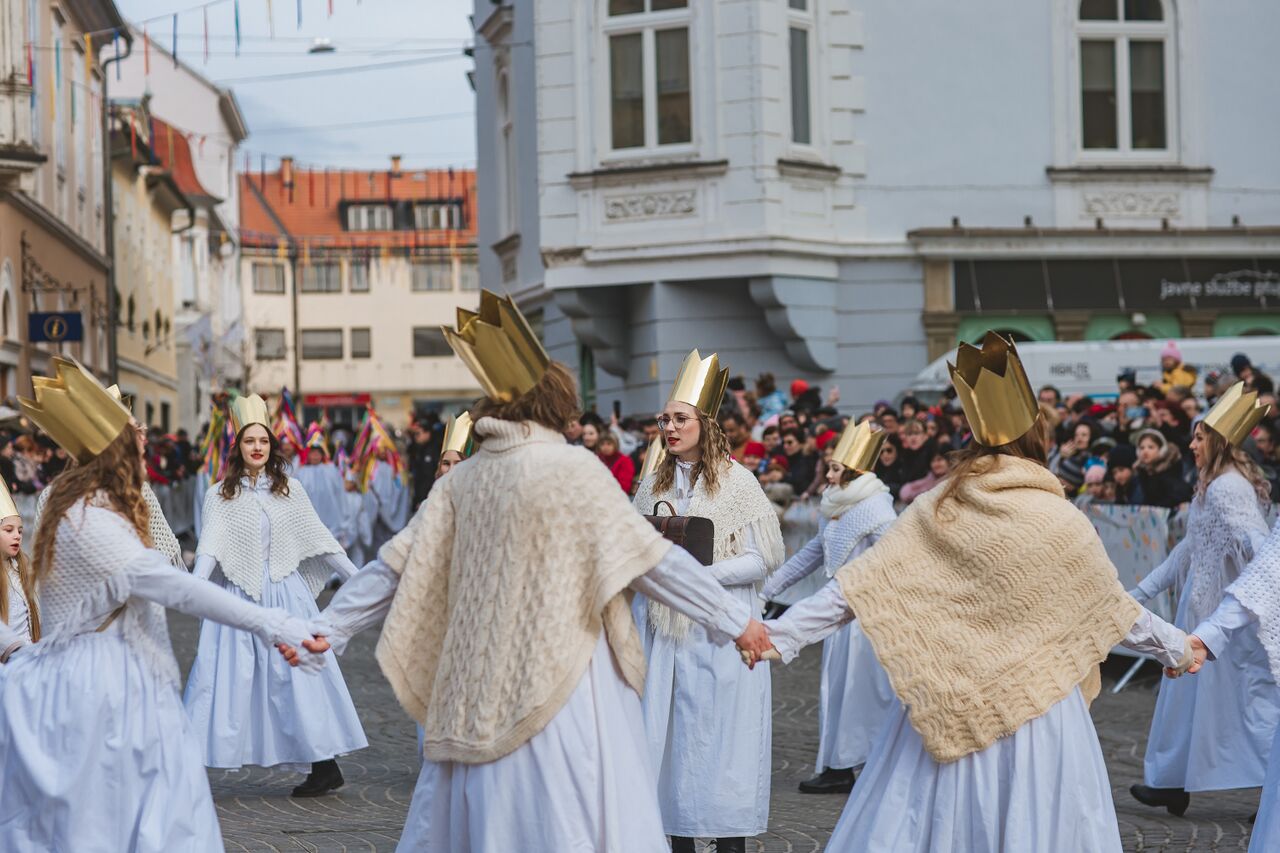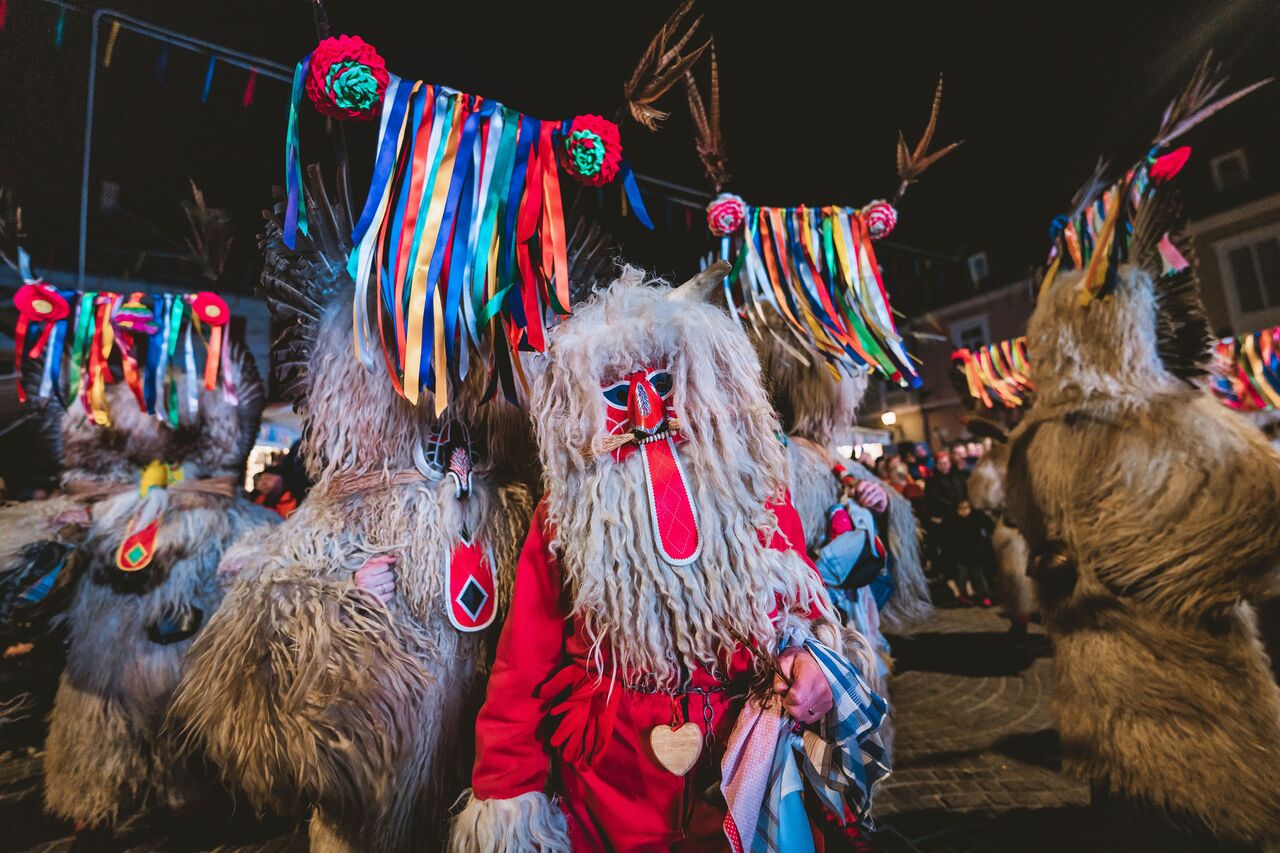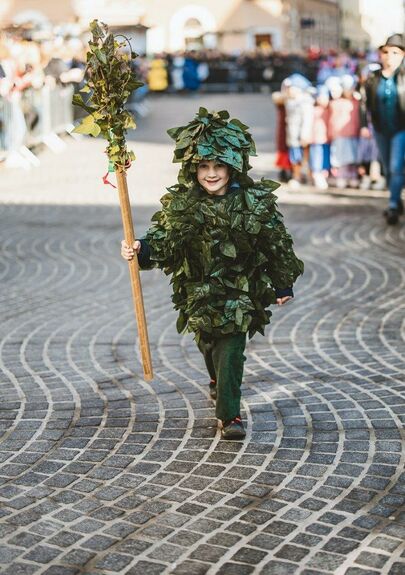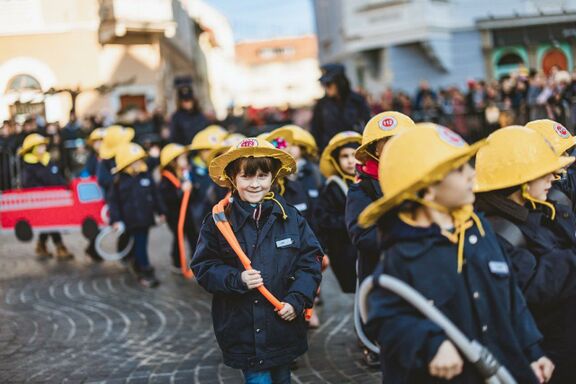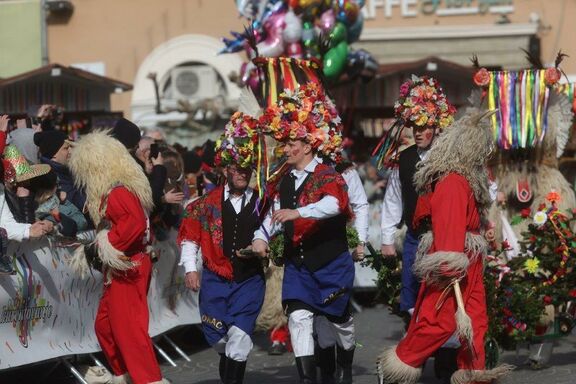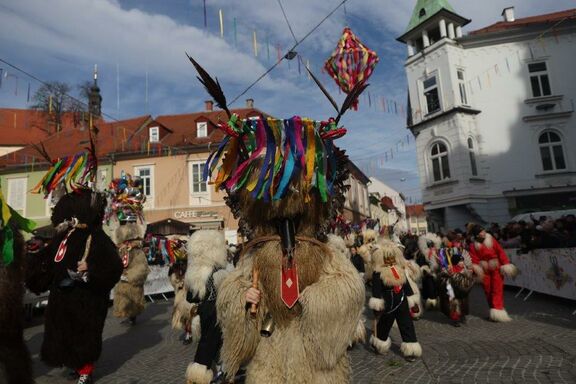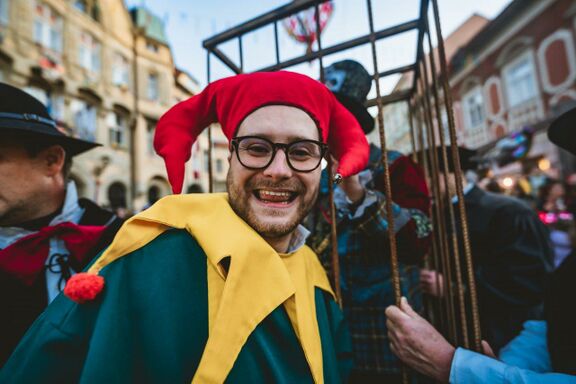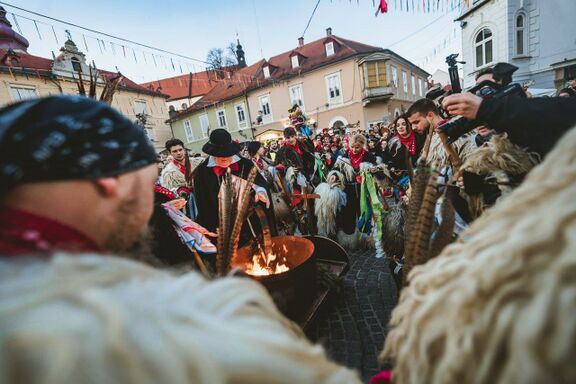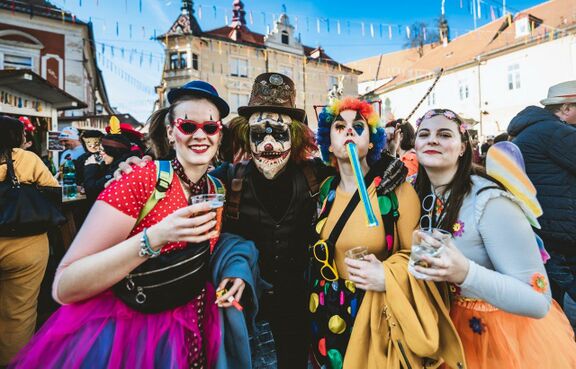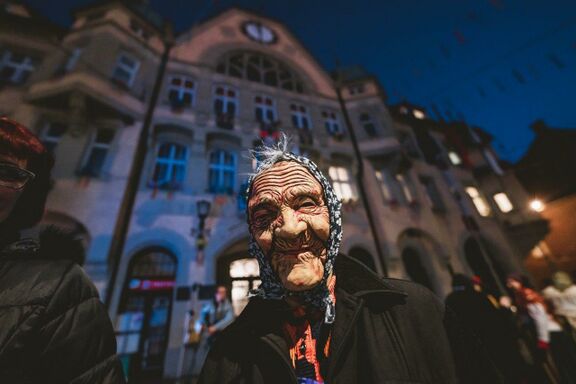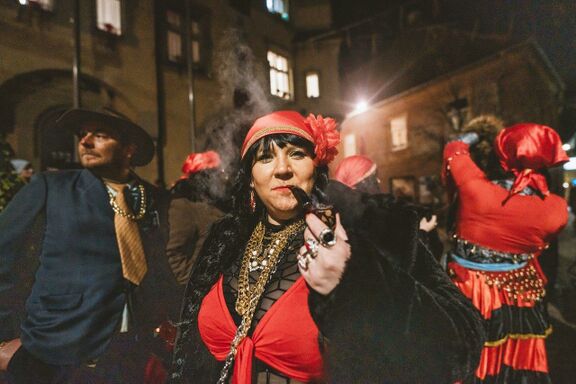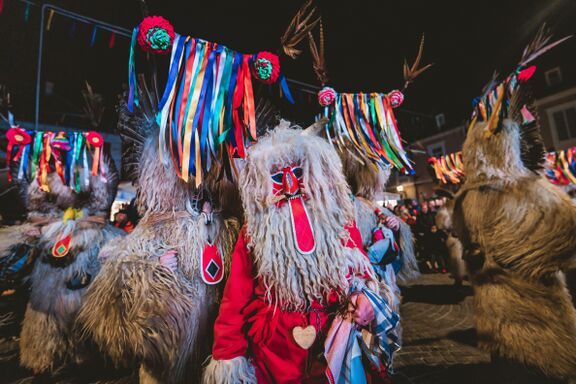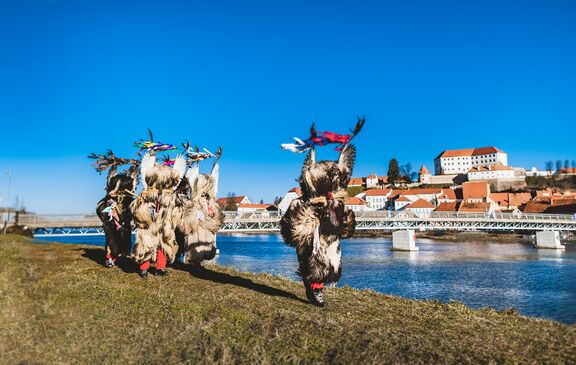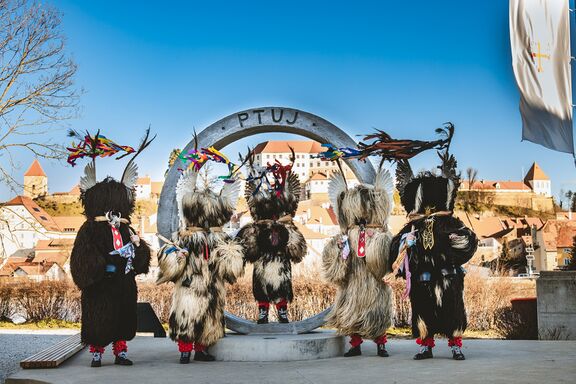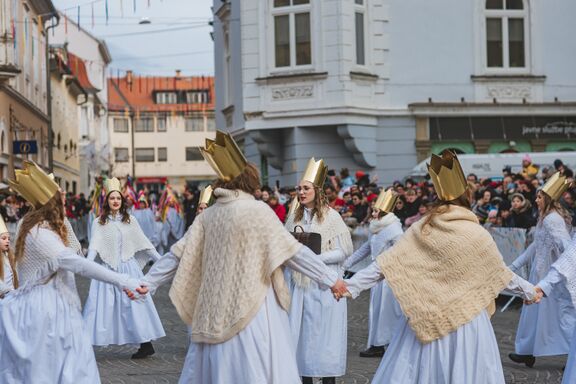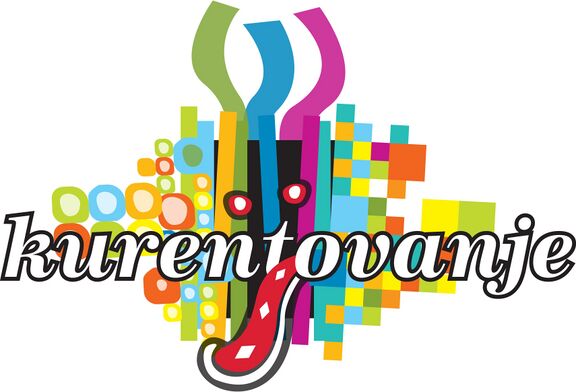Difference between revisions of "Kurentovanje"
(imported from XML by extractor/importer) |
|||
| (72 intermediate revisions by 12 users not shown) | |||
| Line 1: | Line 1: | ||
{{Article | {{Article | ||
| − | | status = | + | | status = NEEDSUPDATE WRITING TOPROOFREAD NIFERTIK! |
| − | | maintainer = | + | | maintainer = Simon Žlahtič |
}} | }} | ||
| + | |||
| + | |||
| + | |||
{{Infobox | {{Infobox | ||
| name = Kurentovanje | | name = Kurentovanje | ||
| localname = Kurentovanje | | localname = Kurentovanje | ||
| − | | street | + | | logo = Logotip kurentovanje horizontala vektorski.jpg |
| − | | telephone = 386 (0) 2 | + | | image = |
| − | + | | street = Mestni trg 4 | |
| − | | email = info@ | + | | town = SI-2250 Ptuj |
| − | | website = http://www. | + | | telephone = 386 (0) 2 779 60 11 |
| − | | | + | | email = info@kurentovanje.net |
| + | | website = http://www.kurentovanje.net | ||
| + | | organised by = Ptuj Public Institute | ||
| + | | frequency = annual | ||
| + | | dates and duration = February, 11 days | ||
| + | | duration weeks = 6,7,8 (2012) 5,6 (2013) 6,7,8,9,10 (2014) | ||
| + | | festival dates = 2.2.2015 - 17.2.2015, 2.2.2016 - 9.2.2016, 17.2.2017 - 28.2.2017, 2.2.2018 - 13.2.2018, 23.2.2019 – 5.3.2019, 15.2.2020 – 25.2.2020, 15.2.2020 – 25.2.2020, 2.2.2021 – 16.2.2021, 19.2.2022 - 1.3.2022, 11.2.2023 - 21.2.2023, 3.2.2024 - 13.2.2024 | ||
| contacts = {{Contact | | contacts = {{Contact | ||
| − | | name = | + | | name = |
| − | | role = | + | | role = |
| − | | email = | + | | telephone = |
| + | | email = | ||
}}{{Contact | }}{{Contact | ||
| − | | name = | + | | name = Miha Masten |
| role = Culture Co-ordinator | | role = Culture Co-ordinator | ||
| − | | email = | + | | telephone = 386 (0) 2 620 7351 |
| + | | email = miha.masten@js-ptuj.si | ||
}} | }} | ||
| + | |accounts= | ||
| + | http://twitter.com/kurentovanje | ||
| + | http://www.facebook.com/Kurentovanje | ||
| + | http://www.youtube.com/channel/UCqPTMOxBufTPf4AXsOmrppQ | ||
}} | }} | ||
| − | {{ | + | |
| − | The masked rite of spring known as [[Kurentovanje]] | + | {{Teaser| |
| + | |||
| + | {{wide image|Kurenti koranti Stanko Kozel 2023 N.jpg}} | ||
| + | |||
| + | The masked rite of spring known as [[Kurentovanje]] has been held since [[established::1960]], every February for 10 days leading up to Shrove Tuesday. It is the most popular Mardi Gras celebration in Slovenia, with most of the festivities centered in and [[Municipality of Ptuj|Ptuj, Slovenia's oldest town]], which has hosted Kurentovanje for around six decades. | ||
| + | The Carnival was admitted into the ''European Federation of Carnival Cities'' in 1991. In 2017, the ''Door-to-door rounds of the Kurent'' were inscribed on the UNESCO representative list of intangible cultural heritage of humanity. | ||
| + | |||
| + | Groups from Germany, Austria, Croatia, Italy, Macedonia, Romania, and Bulgaria usually participate in the event, assisting local people in building up the Land of the Kurent. The rite itself is accompanied by a full agenda of concerts, activities, and other attractions, ensuring that the event is attended by more than 100,000 visitors every year. | ||
| + | |||
| + | {{Image|Vile 11.2.2023 Otvoritvena etno povorka 2023 Stanko Kozel final.jpg}} | ||
| + | |||
| + | {{Image|Pustna ringarajanja Stanko Kozel 2023.jpg}} | ||
| + | |||
| + | {{Image|Hudič Stanko Kozel 2023.jpg}} | ||
| + | |||
}} | }} | ||
| − | |||
| − | |||
| − | |||
| + | ==The origins== | ||
| + | The name ''Kurentovanje'' derives from the festival's central figure, the Kurent, who, in earlier times, was believed to possess the power to chase away winter and usher in spring. The origins of both the Kurent and the Kurentovanje festivities are obscure, potentially stemming from earlier Slavic, Celtic, or Illyrian customs. Similar traditions are found throughout the region, extending to parts of Croatia, Hungary, Serbia, Bulgaria, and elsewhere. | ||
| + | The Kurent costume is simple, consisting of a sheepskin hat and outfit, cow bells hanging from a chain belt, red or green wool socks, and black boots. However, the creation of the Kurent mask is a significant folk art in Slovenia, with only two masters of Kurent masks remaining – Master Klinc from Spuhlja and Master Zelenik from Markovci. The mask, crafted from leather, features two holes for the eyes and one for the mouth, surrounded by red paint. A trunk-like nose, whiskers made of twigs, and teeth made of white beans are attached, with the final touch being a long, red tongue. | ||
| + | |||
| + | Studies of the Kurent tradition have been conducted at [[Ptuj – Ormož Regional Museum]] and [[BISTRA Scientific Research Centre, Ptuj]]. | ||
| + | |||
| + | |||
| + | {{Image|Obhodi kurentov Stanko Kozel 2023.jpg}} | ||
| + | |||
| + | {{YouTube|TK2TXtkHTKc}} | ||
| + | |||
| + | ==European Capital of Culture 2012== | ||
| + | Kurentovanje Festival has been included in the programme of the [[Maribor, European Capital of Culture 2012]], Ptuj being one of its partner cities. The aim is to turn the festival in the largest ethno carnival in Europe. The ethnological guidelines were developed by [[Janez Bogataj]] and [[Aleš Gačnik]], two scientists who acknowledge the constant metamorphoses and transformations of this tangible heritage. | ||
| + | |||
| + | {{Image|Ptujski prstan Kurentovanje 2023 Stanko Kozel (9).jpg}} | ||
| + | |||
| + | {{Image|Orači 2023 Stanko Kozel Mednarodna.jpg}} | ||
| + | |||
| + | {{YouTube|Cp2tVQrW49Y}} | ||
| + | |||
| + | ==See also== | ||
| + | *[[Municipality of Ptuj]] | ||
| + | *[[Ptuj – Ormož Regional Museum]] | ||
| + | *[[BISTRA Scientific Research Centre, Ptuj]] | ||
| + | *[[Maribor, European Capital of Culture 2012]] | ||
| + | |||
| + | ==External links== | ||
| + | *[http://www.kurentovanje.net/en Kurentovanje Festival website] | ||
| + | *[https://ich.unesco.org/en/RL/door-to-door-rounds-of-kurenti-01278 The inscription on the UNESCO list] | ||
| + | *[http://www.ptuj.si Municipality of Ptuj] | ||
| + | |||
| + | {{Gallery}} | ||
| + | |||
| + | [[Category:Festivals]] | ||
| + | [[Category:Intangible heritage festivals]] | ||
| + | [[Category:Festivals in February]] | ||
| − | [[Category: | + | [[Category:Intangible heritage]] |
| + | [[Category:Maribor, European Capital of Culture 2012]] | ||
Latest revision as of 15:46, 30 January 2024
-
8 Mar 2014
The first big Slovene carnival in London, with Kurents from Ptuj and a concert by Zoran Predin, supported by the Embassy of the Republic of Slovenia London,
-
1 Mar 2014
The Second Annual Cleveland Kurentovanje, supported by the Embassy of the Republic of Slovenia Washington and Consulate General of the Republic of Slovenia in Cleveland, Ohio,
-
to
22 Feb 2014
23 Feb 2014
Kurents from the Ethnographic Society Kurent Ptuj at the traditional carnival Mulhouse, supported by the Embassy of the Republic of Slovenia Paris,
-
23 Feb 2013
-
to
6 Feb 2012
28 Feb 2012
Month of Culture: two publications related to Slovene art and heritage, Kurentovanje visiting Zagreb, donation of the chair Rex to the Croatian Museum of Arts and Crafts, co-organised by the Embassy of the Republic of Slovenia Zagreb
The origins
The name Kurentovanje derives from the festival's central figure, the Kurent, who, in earlier times, was believed to possess the power to chase away winter and usher in spring. The origins of both the Kurent and the Kurentovanje festivities are obscure, potentially stemming from earlier Slavic, Celtic, or Illyrian customs. Similar traditions are found throughout the region, extending to parts of Croatia, Hungary, Serbia, Bulgaria, and elsewhere. The Kurent costume is simple, consisting of a sheepskin hat and outfit, cow bells hanging from a chain belt, red or green wool socks, and black boots. However, the creation of the Kurent mask is a significant folk art in Slovenia, with only two masters of Kurent masks remaining – Master Klinc from Spuhlja and Master Zelenik from Markovci. The mask, crafted from leather, features two holes for the eyes and one for the mouth, surrounded by red paint. A trunk-like nose, whiskers made of twigs, and teeth made of white beans are attached, with the final touch being a long, red tongue.
Studies of the Kurent tradition have been conducted at Ptuj – Ormož Regional Museum and BISTRA Scientific Research Centre, Ptuj.
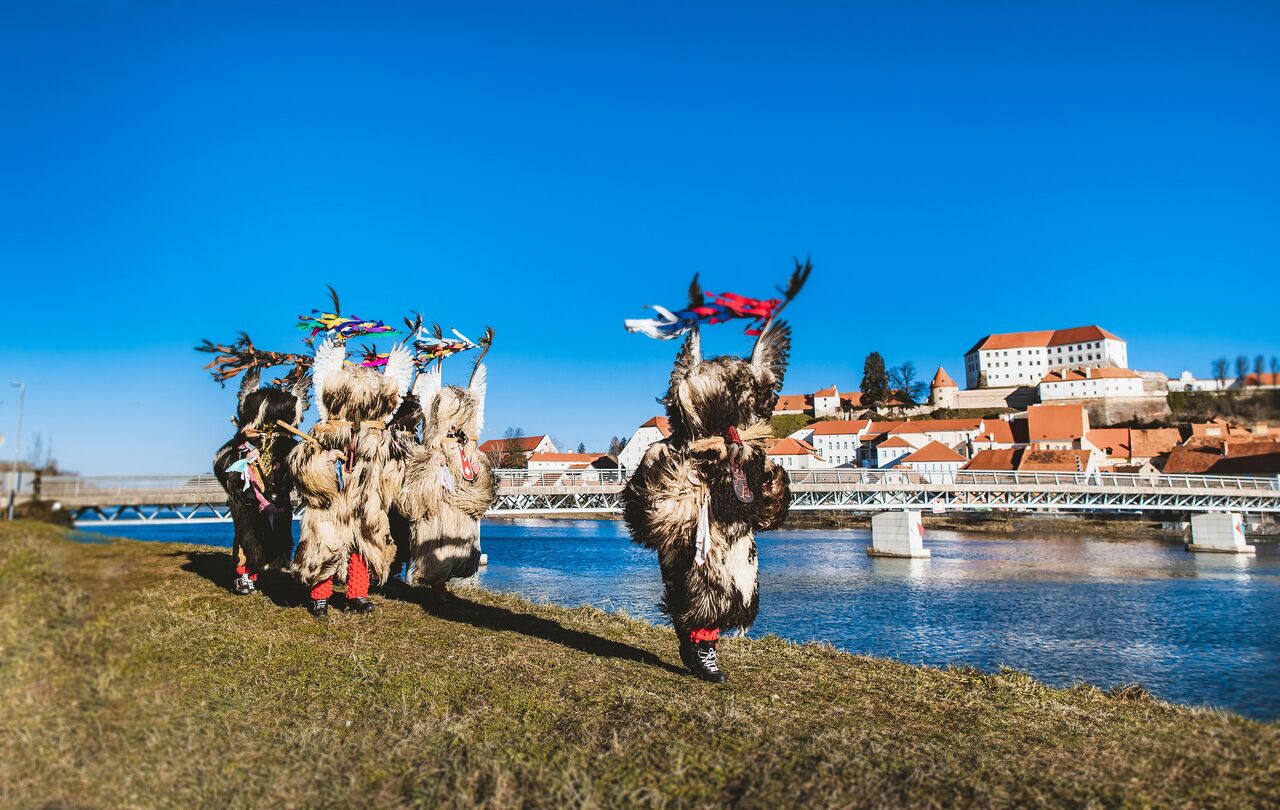 Kurents' door-to-door rounds, Kurentovanje in Ptuj, 2023. Author: Stanko Vozel
Kurents' door-to-door rounds, Kurentovanje in Ptuj, 2023. Author: Stanko Vozel
European Capital of Culture 2012
Kurentovanje Festival has been included in the programme of the Maribor, European Capital of Culture 2012, Ptuj being one of its partner cities. The aim is to turn the festival in the largest ethno carnival in Europe. The ethnological guidelines were developed by Janez Bogataj and Aleš Gačnik, two scientists who acknowledge the constant metamorphoses and transformations of this tangible heritage.
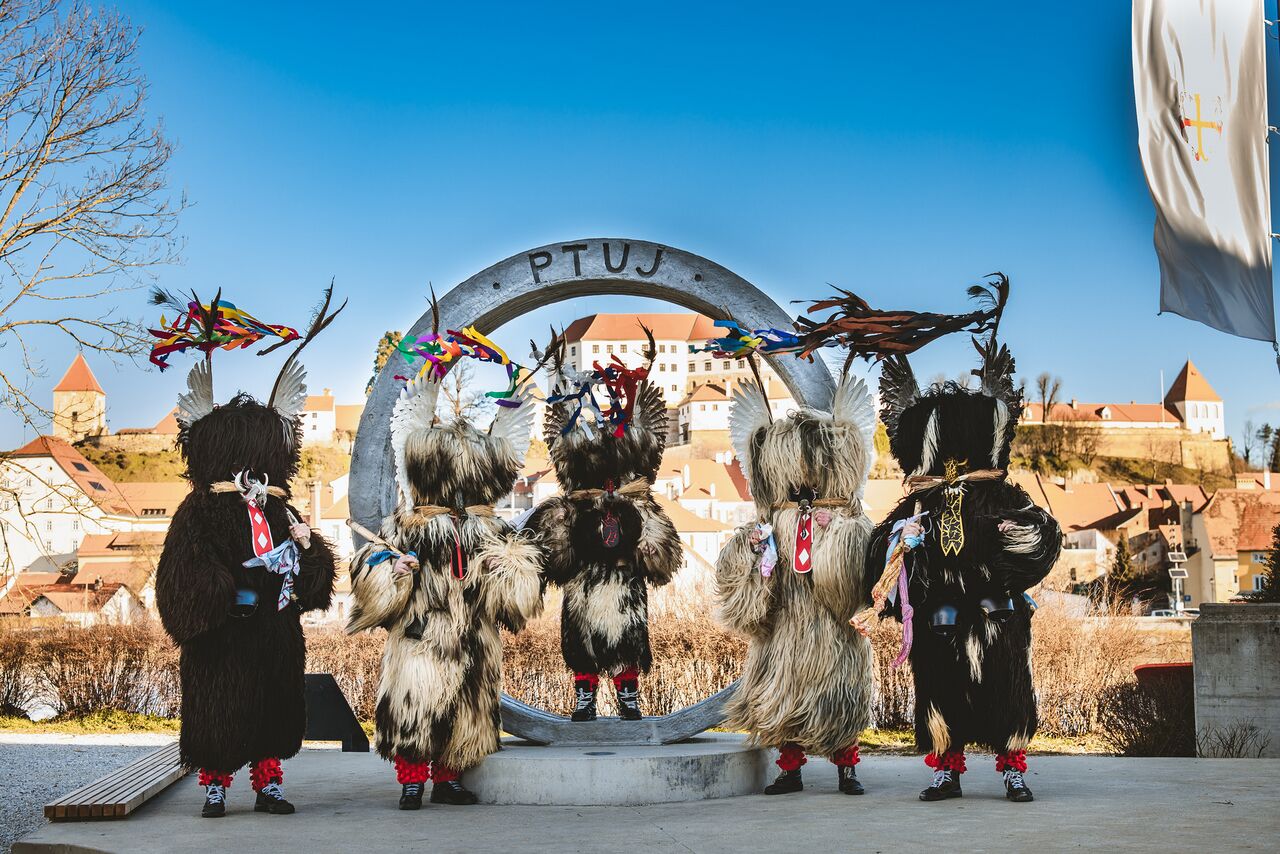 Kurents at the Ptuj Ring monument, Ptuj 2023. Author: Stanko Vozel
Kurents at the Ptuj Ring monument, Ptuj 2023. Author: Stanko Vozel
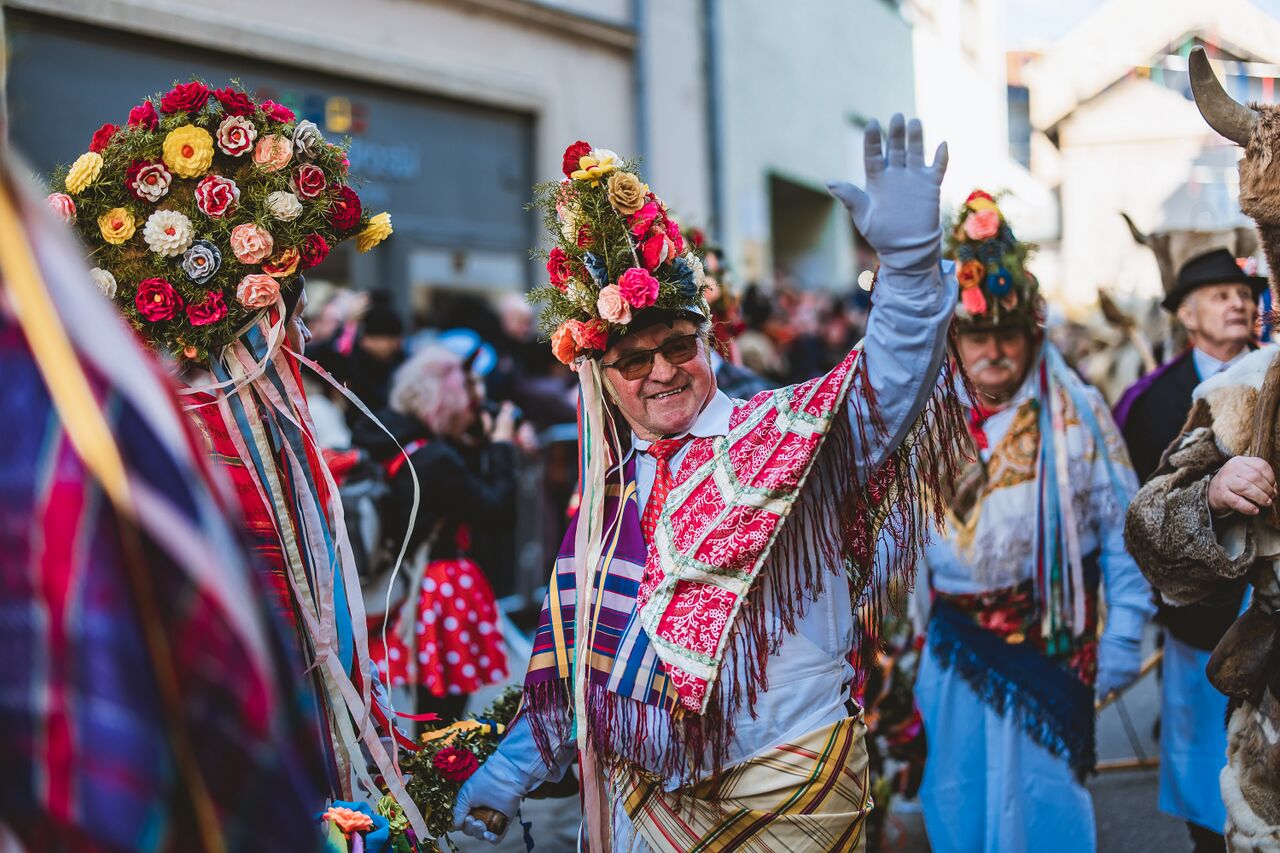 Meet traditional carnival characters: Ploughmen, Kurentovanje in Ptuj, 2023. Author: Stanko Vozel
Meet traditional carnival characters: Ploughmen, Kurentovanje in Ptuj, 2023. Author: Stanko Vozel
See also
- Municipality of Ptuj
- Ptuj – Ormož Regional Museum
- BISTRA Scientific Research Centre, Ptuj
- Maribor, European Capital of Culture 2012
External links
Gallery
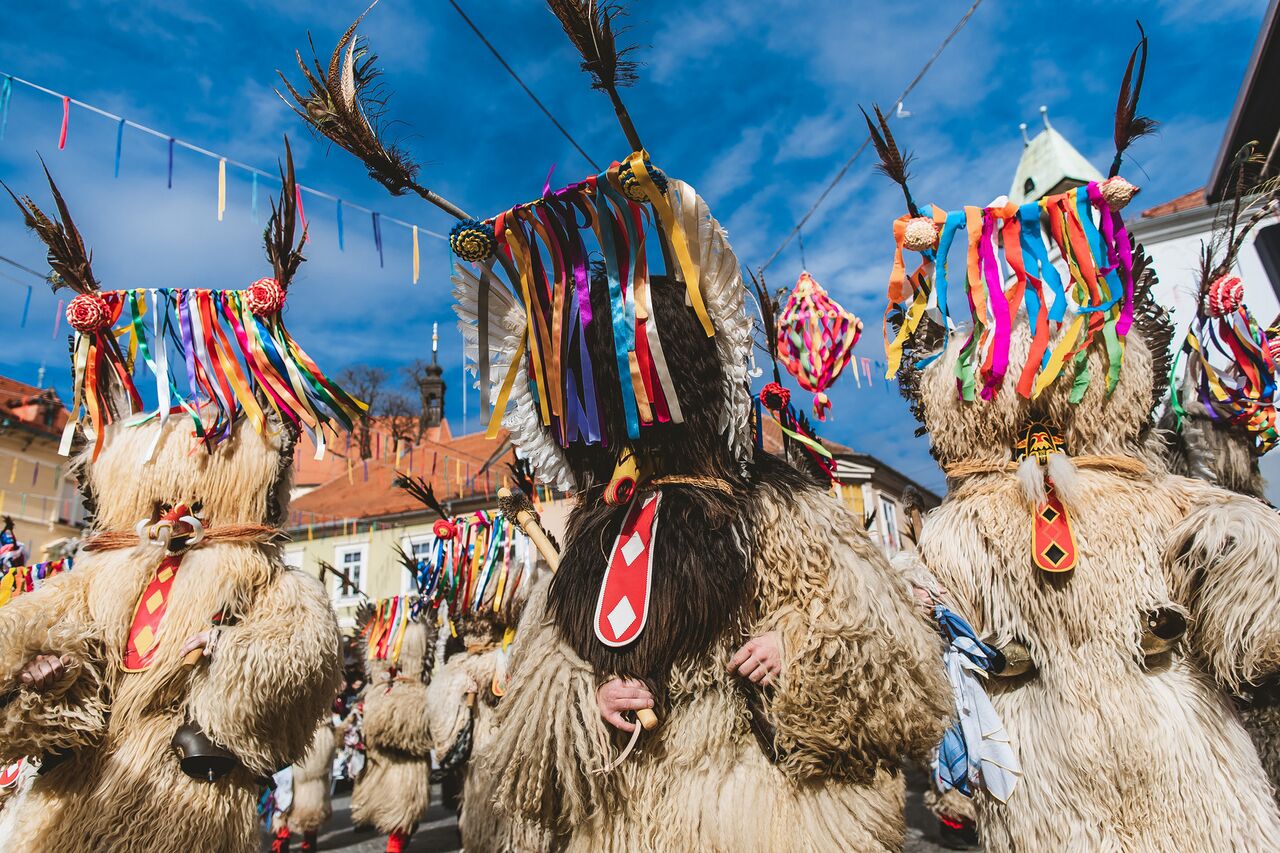 Kurent or Korant, the most known and popular traditional carnival character in Slovenia, Kurentovanje, Ptuj 2023. +
Kurent or Korant, the most known and popular traditional carnival character in Slovenia, Kurentovanje, Ptuj 2023. +


